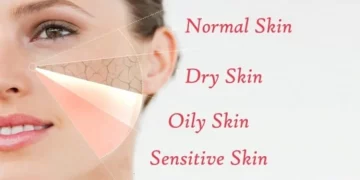Introduction: Understanding Sunscreen Types
Sunscreen is a vital part of any skincare routine, and choosing the right one can be a bit daunting, especially when faced with the two primary types: physical (mineral) and chemical sunscreens. Both types offer effective protection against harmful UV rays, but they work in different ways, have distinct ingredients, and are better suited for different skin types and preferences.
In this article, we will break down the differences between physical and chemical sunscreens, how they work, and which type is best for various skin types. By the end of this article, you’ll have a clearer understanding of which sunscreen suits your needs and why it’s essential to incorporate one into your daily skincare regimen.
How Physical Sunscreen Works: Physical Blockers Like Zinc Oxide
Physical sunscreens, also known as mineral sunscreens, act as a physical barrier between your skin and the sun’s harmful rays. The primary active ingredients in these sunscreens are zinc oxide and titanium dioxide. These minerals sit on the skin’s surface and work by reflecting or scattering UV rays away from the skin, preventing them from penetrating and causing damage.
One of the key benefits of physical sunscreens is that they begin to work immediately after application, as they don’t require time to absorb into the skin like chemical sunscreens. The physical blockers create a shield on the skin’s surface, providing broad-spectrum protection from both UVA and UVB rays. Zinc oxide, in particular, offers the most comprehensive protection, blocking a wide range of UV rays.
Here’s how physical sunscreens function:
- Reflection and Scattering of UV Rays: Physical sunscreens use the reflective properties of zinc oxide and titanium dioxide to scatter UV rays away from the skin. This provides a physical barrier that deflects the sun’s rays before they have the chance to penetrate the skin and cause damage.
- Broad-Spectrum Protection: Physical sunscreens provide excellent protection against both UVA and UVB rays. UVA rays are responsible for premature aging and skin cancer, while UVB rays cause sunburns. Physical sunscreens, particularly those with high concentrations of zinc oxide, protect against both types of radiation.
- Immediate Protection: Unlike chemical sunscreens, which need some time to absorb into the skin, physical sunscreens work immediately. As soon as you apply them, they begin to protect your skin from the sun. This makes them a convenient option for those who need quick and reliable protection.
- Less Irritation for Sensitive Skin: Physical sunscreens tend to be gentler on the skin compared to chemical sunscreens. The minerals in physical sunscreens don’t penetrate the skin, which reduces the likelihood of irritation, making them a great option for those with sensitive or reactive skin.
How Chemical Sunscreen Works: Absorbing UV Rays into the Skin
Chemical sunscreens, on the other hand, work by absorbing UV rays into the skin. These sunscreens contain active ingredients such as avobenzone, oxybenzone, octinoxate, and homosalate, which absorb UV radiation and convert it into heat. The absorbed heat is then released from the skin, preventing the UV rays from causing damage.
While chemical sunscreens don’t create a physical barrier like their mineral counterparts, they effectively protect the skin by interacting with UV rays at a molecular level. Chemical sunscreens tend to be lighter in texture and are often preferred for daily use, especially for people who want a more comfortable, non-greasy feel.
Here’s how chemical sunscreens function:
- Absorption of UV Rays: Chemical sunscreens contain organic compounds that absorb the sun’s UV radiation. These compounds transform the UV energy into heat and then release it from the skin. This process prevents the UV rays from penetrating the skin and causing damage.
- Fast Absorption: One of the main advantages of chemical sunscreens is that they are usually lightweight and absorb quickly into the skin. This makes them a popular choice for those who prefer a non-greasy, invisible finish.
- Variety of Formulations: Chemical sunscreens come in a variety of formulations, including lotions, gels, sprays, and creams. They can often feel lighter and more comfortable on the skin compared to physical sunscreens, especially in hot and humid climates.
- Potential for Irritation: While chemical sunscreens are effective, they may cause irritation for individuals with sensitive skin or those prone to skin reactions. Some of the active ingredients in chemical sunscreens, such as oxybenzone, may also cause allergic reactions or irritation for certain skin types. If you have sensitive skin, it’s essential to patch test a chemical sunscreen before applying it all over your face or body.
- Broad-Spectrum Protection: Like physical sunscreens, chemical sunscreens also offer broad-spectrum protection. However, depending on the combination of active ingredients used, the level of protection may vary. It’s important to choose a chemical sunscreen that specifically offers protection against both UVA and UVB rays.

Choosing the Right One for Your Skin Type: Dry, Oily, Sensitive
When choosing between physical and chemical sunscreens, it’s essential to consider your skin type, as both types of sunscreen offer different benefits and textures. Here’s a guide to help you decide which sunscreen is best for your unique skin needs:
- Dry Skin: If you have dry skin, you may prefer a chemical sunscreen because they tend to have a lighter, more hydrating texture. Some chemical sunscreens contain additional moisturizing ingredients, such as glycerin or hyaluronic acid, which help keep the skin hydrated. Look for a chemical sunscreen that has a creamy or dewy finish to add moisture to your skin while providing sun protection. However, if you prefer a physical sunscreen, choose one with added moisturizing properties.
- Oily Skin: For those with oily or acne-prone skin, physical sunscreens can be an excellent choice. Many mineral sunscreens are formulated to be oil-free, and their lightweight formulas won’t clog pores. Zinc oxide, a key ingredient in physical sunscreens, is also known for its anti-inflammatory properties, which can help reduce redness and irritation. However, if you prefer a chemical sunscreen, choose a gel-based or oil-free formula to avoid a greasy finish.
- Sensitive Skin: Sensitive skin requires extra care when selecting a sunscreen. Physical sunscreens are often the best choice for individuals with sensitive or reactive skin because they are less likely to cause irritation. Zinc oxide and titanium dioxide are natural minerals that stay on the surface of the skin, reducing the risk of sensitivity. On the other hand, some chemical sunscreens contain ingredients that can irritate sensitive skin, such as oxybenzone or avobenzone. If you have sensitive skin, opt for a fragrance-free, mineral-based sunscreen or a chemical sunscreen with soothing ingredients like aloe vera or chamomile.
- Normal Skin: Normal skin types have the flexibility to choose either physical or chemical sunscreens, depending on their preferences. If you prefer a matte finish and lightweight texture, chemical sunscreens may be your go-to. On the other hand, if you want broad-spectrum protection and a natural, non-greasy finish, physical sunscreens are a solid option.
- Acne-Prone Skin: Acne-prone skin can benefit from both physical and chemical sunscreens, but it’s important to choose non-comedogenic formulations. Mineral sunscreens are usually less likely to clog pores, but chemical sunscreens with oil-free, lightweight formulas are also great choices. Look for sunscreens that are specifically labeled “non-comedogenic” to prevent breakouts.
Conclusion: Which Sunscreen Is Best for You?
Both physical and chemical sunscreens offer effective protection against UV rays, but they have distinct differences in terms of texture, application, and suitability for different skin types. Physical sunscreens work by forming a protective barrier on the skin’s surface, reflecting UV rays away, and are ideal for those with sensitive skin or looking for immediate protection. On the other hand, chemical sunscreens absorb UV rays and convert them into heat, offering a lighter, often more comfortable option for daily wear.
When choosing the right sunscreen for your skin type, consider your preferences and skin needs. If you have dry skin, you might lean toward a chemical sunscreen with added hydration. If you have sensitive or acne-prone skin, physical sunscreens may be the better option. Regardless of the type, always choose a sunscreen with broad-spectrum protection and SPF 30 or higher to ensure your skin stays safe from harmful UV rays.
Ultimately, the best sunscreen is the one that works for you and encourages consistent daily use. Incorporating sunscreen into your daily skincare routine, regardless of the season, is essential for maintaining healthy, youthful skin and preventing sun damage.












































